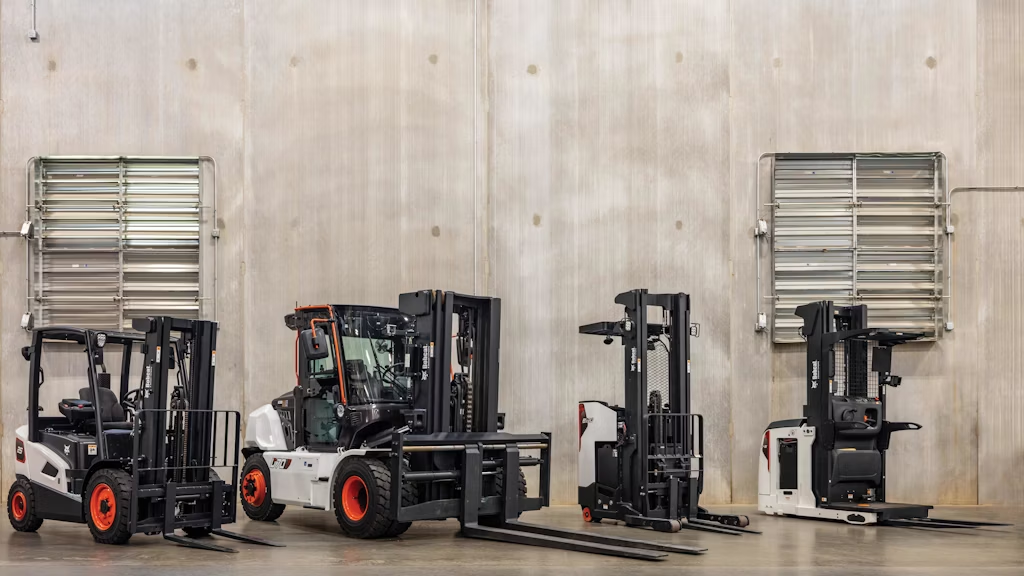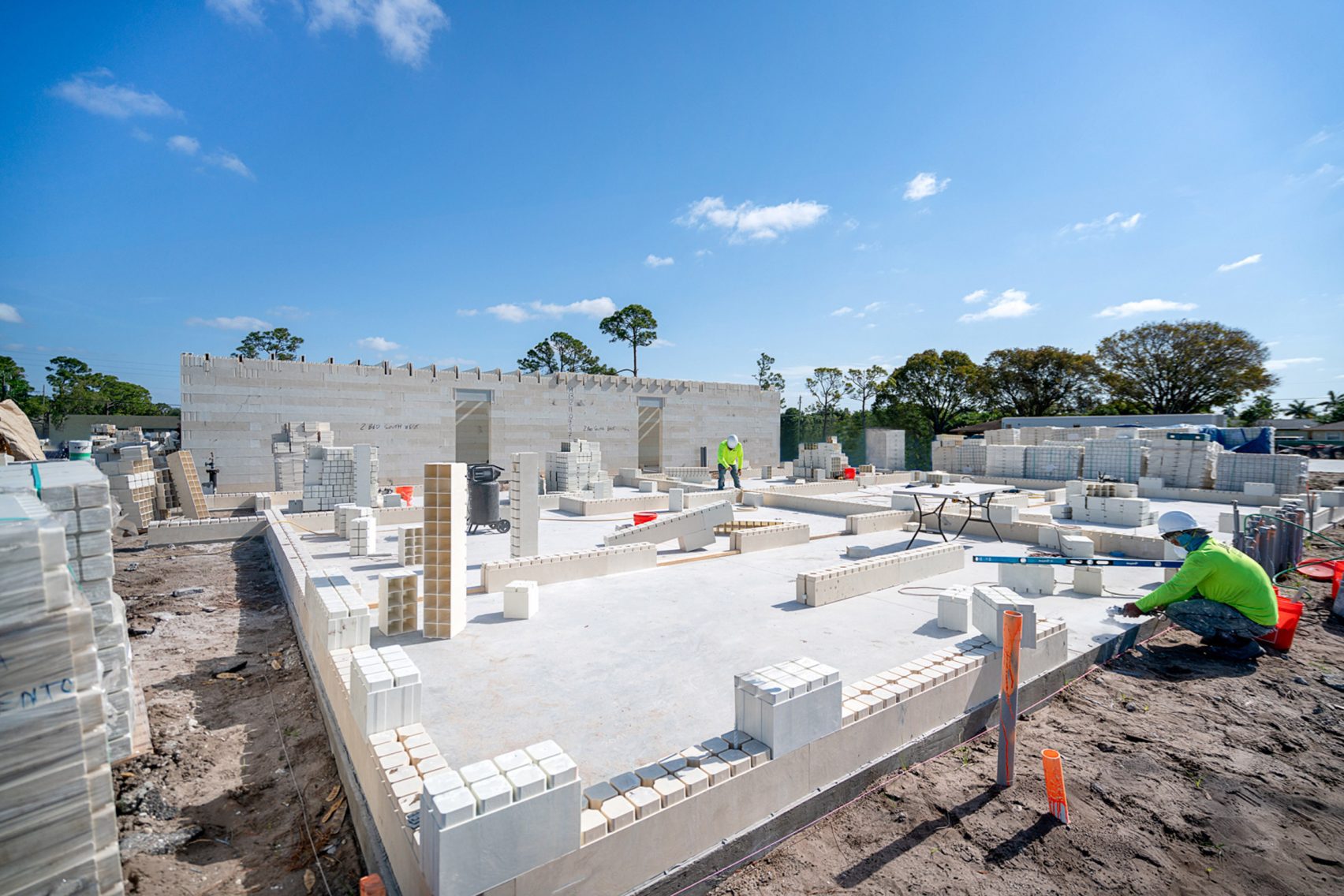Miami-based construction materials manufacturer RENCO is changing the way people build structures. Their lightweight stackable molded blocks—composed of recycled glass fibers, recycled plastic, resin, and stone—are ultra-durable building materials capable of withstanding a category 5 hurricane, making them ideal for use in disaster-prone areas.
Real-life LEGO for contractors
RENCO USA offers a LEGO-like building system using blocks made of resins recovered from the boating industry, glass fibers, and stone—or “renewable composite”, which is how the company’s name arose.
The idea behind the structural building system is to help contractors do their jobs faster using a system of interlocking building components, including various sizes of blocks, columns, beams, joists, headers, decking, and connectors. The components are joined together by an adhesive. The blocks and other components are comprised of about 40% recycled materials.
The system was originally developed to accelerate rebuilding following a natural disaster in Turkey, but it can be used for buildings as tall as five stories, even in natural disaster-prone areas.
The block components are rectangular and topped with knobs that interlock and stack like LEGO blocks. The blocks are typically 8x8x16 inches and weigh 20% less than a typical concrete block.
Selling point: RENCO’s blocks are similar to stackable concrete blocks but they are lighter, quicker to assemble, require little training, and are cheaper to transport.
Lakewood Village in Palm Springs, FL
RENCO’s interlocking blocks system was recently used to construct four 3-story apartment buildings at Lakewood Village in Palm Springs, FL. The project was completed in November 2023 and employed 10 workers. Each of the four buildings was completed in about eight weeks.
Led by architectural firm Arquitectonica, the Palm Springs project created 96 apartments in four identical buildings. The RENCO components for this project were manufactured and shipped from Turkey—a cost that nearly quintupled from $3,500 to $15,000 per shipping container post-pandemic, necessitating the construction of a U.S. plant for the company. The international supply chain has been seemingly permanently disrupted since the pandemic, and materials and shipping costs have skyrocketed. That trend is leading to more industrial investment in the U.S.
The rise of prefab
Prefabrication in construction has been gaining popularity for years. Entire buildings (sans foundation) are fabricated offsite and shipped to the work site for assembly. The same process happens with bridges, piers, and other larger structures. The reason: fabricating components of structures offsite is cheaper and often more accurately accomplished than building them onsite. It’s also faster.
There’s a simple reason why RENCO’s building system is gaining traction: it offers precise, pre-construction component fabrication and building construction that’s affordable, lighter, and quicker to transport.
The technology is easy to assemble. The blocks are stacked on a concrete foundation and “mortared” with an adhesive that binds them together. It doesn’t require much more than a forklift operator and trained workers, a glue gun powered by a small generator, and a mallet to complete. No cranes, scaffolding, cutting, welding, or grinding of components is needed.
RENCO’s system also offers the prospect of far less construction material waste on a job site. Construction sites typically create dumpsters full of waste materials, and contractors add about 10% extra materials when calculating what they need to account for waste. RENCO provides a nearly waste-free solution. Even the tailings from the blocks are recycled by the company to be used in mixes for more building components.
The system is attracting the attention of eco-minded builders and owners who want to build faster, cheaper, and more accurately while creating a smaller carbon footprint. Fewer trucks are required to ship RENCO’s lighter-than-concrete components, and the company says RENCO’s components have passed over 400 rigorous safety tests.
RENCO’s building system also creates monolithic structures that can resist forces in excess of 160 pounds per square foot and 85-mile-per-hour winds.
According to the U.S. Green Building Council (USGBC), the RENCO Structural Building System has been tested, analyzed, and evaluated in American National Standards Institute (ANSI) certified laboratories to American Society for Testing and Materials (ASTM) standards for material and physical characteristics, structural performance, fire resistance, and environmental resistance. USGBC is backing the technology’s dependability and has issued an Evaluation permitting the use of the RENCO Structural Building System in Florida’s High-Velocity Hurricane Zone.
RENCO blocks prove ultra-practical—but not completely sustainable
While RENCO USA claims its products as sustainable, it’s unclear whether that is entirely correct. The company uses resins from the boating industry, in part, to construct its building components.
There are three main types of boat resins:
- Polyester
- Vinylester
- Epoxy
While these materials may withstand degradation and the composite blocks are insect and rodent-resistant, they are susceptible to sunlight and must be covered in an exterior facade within three months of construction.
It should also be noted that the above chemicals are toxic to the environment and people, making them unsuitable for anyone looking for sustainable building materials.
While repurposing wasted boat building materials is laudable, in this case, it’s encapsulating them in a heat-sensitive composite material that might, in the future, be compromised in some way and have negative effects on the environment.
During assembly, the block system is bolted to a foundation and the block courses are glued together, forming a monolith of the structure. The system appears to be similar to Autoclaved’s concrete building system, which uses aerated concrete blocks that are lighter than conventional concrete blocks for building construction.
But according to RENCO president Kenneth Smuts, RENCO’s components are lighter than the competition, faster to assemble, more economical, and longer lasting.
The firm is currently building a 50,000-square-foot manufacturing plant in Jupiter, FL, which is set to be completed by mid-July. The plant will be able to produce $100 million in products annually. RENCO plans to create other plants as regional facilities across the U.S.
The system provides an obvious benefit that contractors and owners might want to get: a savings of 5% overall on a construction project’s costs, Smuts said. RENCO’s components last two to three times as long as conventional products.
“They say the greatest buildings are those you don’t have to rebuild,” Smuts said.
RENCO USA’s parent company is Coastal Construction, a Florida-based contractor performing $1 billion in projects annually in Florida.




















